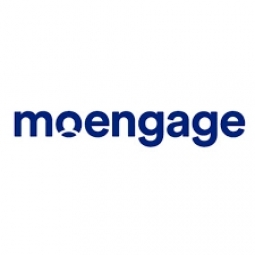Technology Category
- Analytics & Modeling - Computer Vision Software
- Networks & Connectivity - Radio Access Network
Applicable Industries
- Cement
- Cities & Municipalities
Applicable Functions
- Product Research & Development
Use Cases
- Clinical Image Analysis
About The Customer
FabHotels is a new-age hotel chain that offers comfortable and reliable accommodation at an economical price. The brand operates more than 600 hotels across 50+ cities in India, most of them in prime locations. They are known to offer best-in-class experience and amenities to more than 1 million customers. FabHotels is committed to providing 'value for money' stays and has been running a series of email campaigns to stay connected with their customers, offering newsletters, discounts, and more.
The Challenge
FabHotels, a new-age budget hotel chain, was facing a significant challenge with their email promotional campaigns. Despite running multiple campaigns daily, poor domain reputation was causing most of their emails to land in customers' Spam folders, severely impacting their email marketing strategy. This was particularly problematic in the travel industry, where it's crucial for brands to engage with users during high-purchase-intent micro-moments. FabHotels had been using various email vendors and tools for their campaigns for over two years. Initially, these campaigns performed well until the brand reached a certain daily email threshold. Once this threshold was reached, the domain reputation dropped, and emails started landing in the SPAM folder, rendering emails ineffective as a customer engagement channel.
The Solution
To address this challenge, FabHotels turned to MoEngage Email Consulting and Email Campaigns features. They ran a series of experimental email campaigns to determine the exact volume at which emails stop landing in the inbox and understand any microscopic factor that could cause a drop in email domain reputation. MoEngage's team performed an in-depth analysis of these experimental campaigns through an end-to-end email program audit. This included examining email frequency, domain names, infrastructure, copy and design, and customer segmentation. They then devised a three-pronged approach to grow email domain reputation: revising the customer segmentation strategy, optimizing send times, and adjusting email campaign frequency. Additionally, FabHotels' content strategy was revamped based on the services promoted and included email content best practices.
Operational Impact
Quantitative Benefit

Case Study missing?
Start adding your own!
Register with your work email and create a new case study profile for your business.
Related Case Studies.

Case Study
Turning A Stadium Into A Smart Building
Honeywell created what it called the “intelligent system” for the National Stadium in Beijing, China, turning the venue for the opening and closing events at the 2008 Summer Olympics into a “smart building.” Designed by highly controversial artist Ai Weiwei, the “Bird’s Nest” remains one of the most impressive feats of stadium architecture in the world. The 250,000 square meter structure housed more than 100,000 athletes and spectators at a time. To accommodate such capacity, China turned to Honeywell’s EBI Integrated Building Management System to create an integrated “intelligent system” for improved building security, safety and energy efficiency.

Case Study
System 800xA at Indian Cement Plants
Chettinad Cement recognized that further efficiencies could be achieved in its cement manufacturing process. It looked to investing in comprehensive operational and control technologies to manage and derive productivity and energy efficiency gains from the assets on Line 2, their second plant in India.
.png)
Case Study
Smart Street Light Network (Copenhagen)
Key stakeholders are taking a comprehensive approach to rethinking smart city innovation. City leaders have collaborated through partnerships involving government, research institutions and solution providers. The Copenhagen Solutions Lab is one of the leading organizations at the forefront of this movement. By bringing together manufacturers with municipal buyers, the Copenhagen Solutions Lab has catalyzed the development and deployment of next-generation smart city innovations. Copenhagen is leveraging this unique approach to accelerate the implementation of smart city solutions. One of the primary focus areas is LED street lighting.

Case Study
Buoy Status Monitoring with LoRa
The Netherlands are well-known for their inland waterways, canals, sluices and of course port activities. The Dutch Ministry of Infrastructure indicates that there are thousands of buoys and fixed items in and near water environments that would profit from IoT monitoring. One of the problems with buoys for example, is that they get hit by ships and the anchor cable breaks. Without connectivity, it takes quite some time to find out that something has happened with that buoy. Not to mention the costs of renting a boat to go to the buoy to fix it. Another important issue, is that there is no real-time monitoring of the buoys at this moment. Only by physically visiting the object on the water, one gains insight in its status.

Case Study
Barcelona Case Study
Barcelona’s heavy traffic and its associated high levels of pollution were the primary factors that motivated some companies and universities to work on strategies for improving traffic in the city centre. Bitcarrier is one of the technologies involved in the In4Mo Project, whose main objective is to develop the applications that form the core of smart mobility, one of the fundamental pillars of the smart city concept.








